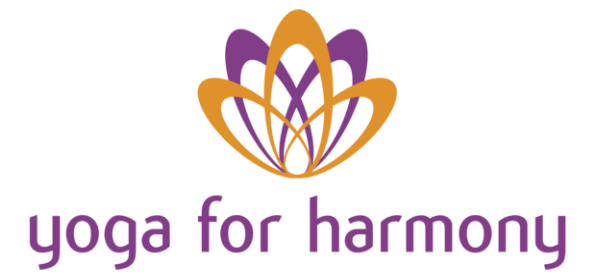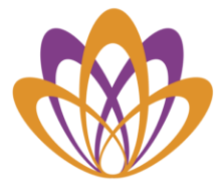Read about the Story of Yoga
Yoga is often viewed in the West as a series of stretching exercises that appear almost gymnastic to a general onlooker, popularised as a way toward health and fitness for all. However, the postures are only a tiny fragment of the psychological philosophy that is Yoga.
Yoga has a rich history, and is a multifaceted practice, which has in the past intertwined with religion, philosophy and of course exercise. It’s important to note the references to yoga here are vastly different, almost unrecognisable to what many may think of as yoga today.
The word ‘yoga’ comes from the Sanskrit root ‘yuj’ which literally means “to unite.” The general meaning of yoga is union. As a spiritual discipline, it’s primarily intended to help create a union of our mind, emotions, body, and energy.
Yoga is a ‘state of being’ rather than something that we ‘do’. There are yogic practises that we do that take us to the state of yoga. These practices can include mindful body movement, meditation, contemplation, breathwork, and sensory withdrawal.
Yoga is believed to be as old as civilisation itself – first traced with originates from the Indus Valley in Northern India, possibly as early as 3300–1900 BCE.
The people of the Indus valley are said to have been invaded by a group of nomadic tribes called Aryans. The Aryans brought with them their own spiritual practises, sacred rites and Gods. These merged with the beliefs of the Indus people, giving rise to the beginning of the Vedic period.
Evidence of yoga poses have been found on stone drawings. Archaeological findings from the Indus Valley Civilization revealed a portrait of a Yogi meditating in what looks like an asana.
The Vedic Period 3000 BC to 800 BC
Around 1500BC a group of people known as ‘forest dwellers’ broke away from the main Vedic society and developed their own spiritual lifestyle based on living in harmony with nature, and practised meditation and contemplation. They were concerned with spiritual goals and the evolution of human life, passing their teachings to worthy students by word of mouth. Their findings were eventually written down many years later (around 800BC) giving rise to the classis Hindu texts of the Upanishads. Vedic yogis felt that living in seclusion, close to nature, was the most conducive environment to practice. The Rishis (Hindu sages) favoured dwellings in forests, but it’s easy to see why many modern-day yoga retreats favour being away from civilisation.
Pre-Classic Period 800 BC to 250 BC
The pre-classical period culminated in the creation of the 700-verse Bhagavad Gita, at around 500BCE. It is credited as the oldest known yoga scripture and is the most famous of Hindu texts. While the ‘Gita’ is dedicated entirely to yoga as it existed at the time, very little is actually devoted to the practical elements of the practice that we know so well today. It’s a beautiful story of a conversation between the God-man Krishna and the soldier Prince Arjuna. In the Bhagavad-Gita three aspects must be brought mutually into our existence: 1) Bhakti (devotion) 2) Jnana (knowledge), 3) Karma (cause and effect)
The Gita unifies the Yogic traditions of Bhakti Yoga, Jnana Yoga, and Karma Yoga through a common thread: Sacrificing the ego through self-knowledge, humility, and reverence leads to higher states of consciousness and self-realization. During this time Yoga found its way into Buddhism too. The Buddha saw that suffering is caused by desire, greed, and delusion. Also recognised in Yogic Philosophy.
The Classic Period 184 BC to 148 BC
Patanjali’s Yoga Sutras have been credited as the very foundation of classic yoga. In the Sutras, guidance is offered to help the reader create peace and achieve fulfilment. A small but important note to make at this stage is that there were several authors by the name of Patanjali and work continues to determine who is the actual author of the Yoga Sutras.
Post Classic Period 800 AD to 1700 AD
Because of the Yoga Sutras’ focus on the mind, yogis of the past hadn’t paid as much attention to the physical body as they were focused on meditation and contemplation.
A few centuries after Patanjali, Yoga took a turn and the new generation of Yoga Masters began to probe the hidden powers of the human body and developed a system where different exercises, in conjunction with deep breathing and meditation, would help to rejuvenate the physical body, prolong life and achieve transcendence. The human body was regarded as the temple of the immortal soul.
Modern Yoga From 1863 AD onwards
There are 4 commonly accepted Pillars of Yoga: Raja Yoga (the Yoga of the mind and emotions) Bhakti Yoga (the Yoga of love and devotion) Karma Yoga (the Yoga of inspired action and service) and Jnana Yoga (the Yoga of inner wisdom and knowledge).
There is also Hatha Yoga, which has become the most widely known form of yoga practice in the West today. Hatha Yoga’s focus is on the body and mainly on the physical postures or asanas.
The word “hatha” can be translated as “willful” or “forceful,” but also as “sun” (ha) and “moon” (tha) creating internal physical balance.
Today there are many styles and derivatives of yoga taught and practised and many different interpretations of each of those styles.
Other styles of asana-based yoga include: – Vinyasa, Ashtanga, Hot Yoga, Iyengar yoga, Restorative yoga, Yin yoga, Kudalini Yoga, Prenatal yoga and many more. See the ’21st Century styles of Yoga’ page for more information on these styles.

Enquiry Form
Fill in the form below and we will get back to you shortly.






